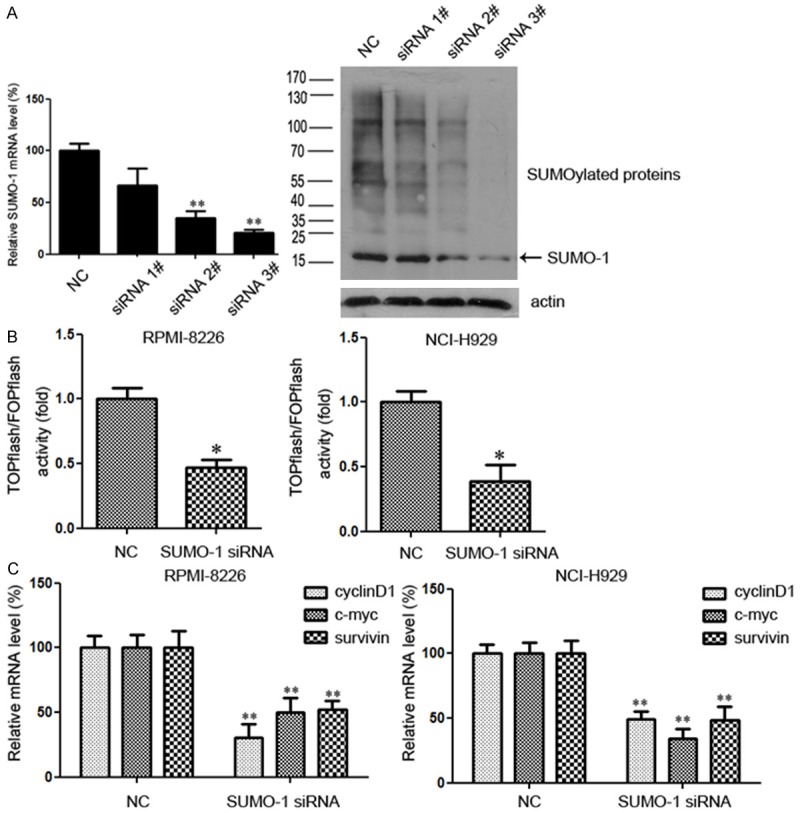Figure 1.

SUMOylation inhibition represses the Wnt/β-catenin pathway. A. For myeloma cells NCI-H929, the silencing efficiency with SUMO-1 siRNA was tested 48 hours after transfection. Total RNA was then extracted, and SUMO-1 mRNA level was determined by real time RT-PCR. Whole cell lysate was collected and lysed and immunoblotted with anti-SUMO-1 antibody. SUMO-1 was indicated by arrow and was about 15 kDa in size, while SUMOylation pattern was detected as conjugated proteins with SUMO-1 modification. B. Effects of SUMO-1 inhibition on TCF/β-catenin reporter activity. Myeloma cells were transfected with control siRNA or siRNA targeting SUMO-1. After 48 h incubation, cells were transfected with TOPflash reporter plasmid or FOPflash-negative control plasmid. Twenty-four hours after re-transfection, cells were harvested and luciferase activity was measured as described in Materials and Methods. All results were normalized for transfection efficiency using the hRL-Null Renilla plasmid. Fold induction corresponds to luciferase activity of positive TOPflash reporter over negative FOPflash reporter. Data represent mean ± S.D.; *p < 0.05 by Student’s t-test; Experiments were performed in triplicate and repeated twice. C. Myeloma cells were treated with SUMO-1 siRNA or negative control for 48 hours. Total RNA was then extracted, and the downstream genes of Wnt/β-catenin pathway, including c-myc, cyclinD1 and survivin, were determined by real time RT-PCR. (*p < 0.05, **p < 0.01 by Student’s t-test). The experiment was performed three times.
